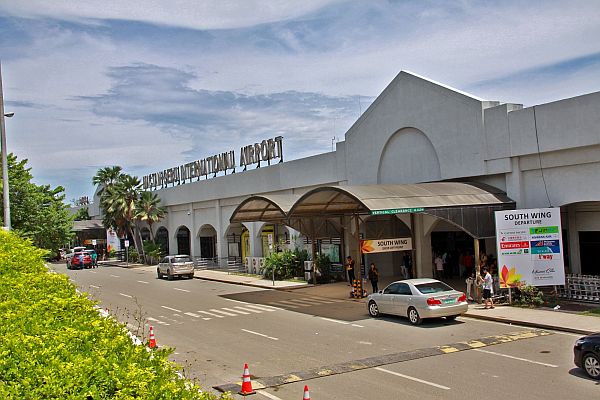
Mactan-Cebu International Airport
CDN FILE PHOTO
The Mactan-Cebu International Airport’s (MCIA) recent recognition as among the 25 best airports in Asia can be used as a marketing push to attract more airline operators and tourists alike, the region’s top tourism official said.
Joshur Judd Lanete II, regional director of the Department of Tourism in Central Visayas (DOT-7), was referring to the MCIA having been named as the 13th best airport in Asia this year by online airport guide and review site Sleeping in Airports.
“With this recognition, GMCAC (GMR-Megawide Cebu Airport Corporation) and MCIAA (MCIA Authority), with the support of DOT through its routes development group and regional office, can market the airport to more airline operators as the gateway,” he said in a text message to Cebu Daily News.
Lanete said tourism stakeholders can also use this recognition in marketing the destination to the region’s source markets with direct access to Cebu via MCIA, highlighting the gateway’s services and facilities.
The airport now has more than 20 airline partners, the newest of which are China-based Juneyao Airlines and Okay Airways.
By the end of October, MCIA will serve a total of 18 international destinations and 35 domestic destinations.
Upgrades
This year’s rating by The Sleeping in Airports takes MCIA one notch higher from its 14th place in 2016. MCIA, the country’s second busiest air gateway, has come a long way from ranking 18th in the same list in 2015.
In its annual survey, Sleeping in Airports asked travelers to rate airports worldwide based on their overall airport experience. Travelers ranked their experience based on the following criteria: Comfort (gate seating and availability of rest zones); Services, facilities and things to do; Food options; Immigration/Security; Customer service; and Cleanliness.
Aside from the MCIA, other provincial airports that made it to this year’s list are the Iloilo International Airport (12th), Francisco Bangoy International Airport in Davao City (17th) and Clark International Airport (22nd).
MCIA’s ranking improvements over the last two years came while GMCAC, the airport’s private operator, is currently rolling out several upgrades and expansion projects such as the construction of its new passenger terminal building.
GMCAC is investing some P32 billion for phase 1 development of Terminal 2 that is set to redefine Cebu’s travel landscape.
Expected to be operational by June 2018, the new passenger terminal was seen to increase the airport’s capacity to 12.5 million from the current 4.5 million.
Cebu Association of Tour Operations Specialists (Catos) past president Edilberto Mendoza concurred with Lanete, saying that stakeholders can very well bank on this great news to invite more tourists to come here in Cebu and explore its islands.
“This is something that we can really be proud of, considering that our gateway is one of the best in Asia,” he said.
Growth forecast
GMCAC Chief Executive Advisor Andrew Harrison earlier said they have added enhancements to Terminal 1 since they began work on Terminal 2 that were meant to reduce passenger congestion, improve the ambience and enhance customer service. Among these upgrades are additional self check-in kiosks, boarding pass scanners and improvements on the airport’s restrooms.
Louie Ferrer, GMCAC president, said in a statement that they are now focused on maximizing Cebu’s connectivity and ensuring that the airport is capable of handling the increasing traffic.
“This October alone, we are launching three new flights to China and bringing in two new international carriers. We are also looking forward to launching new domestic flights later in the year,” he said.
Furthermore, he said they are also targeting to promote Cebu to other untapped markets in North Asia, the Middle East, North America and Europe.
“As tourism in the region grows, so will the airport,” Ferrer added.
He said the company is working round the clock with partners such as the Department of Transportation, MCIAA, airlines, the travel and tourism industry, and the Cebu community to ensure that MCIA can be a world-class gateway for Cebu province and Central Visayas.